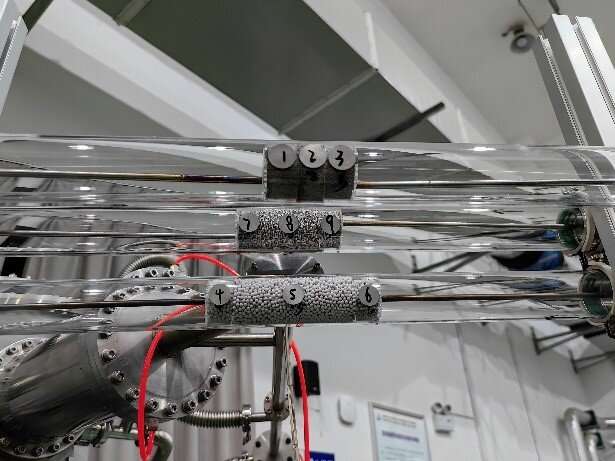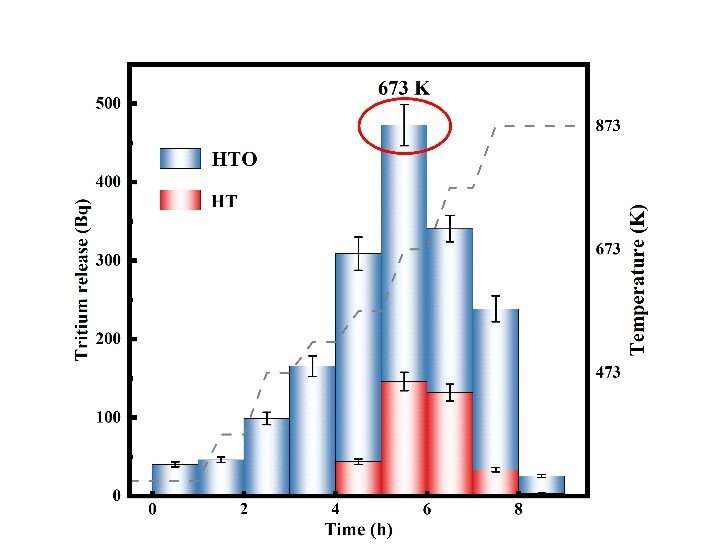This article has been reviewed according to Science X's editorial process and policies. Editors have highlighted the following attributes while ensuring the content's credibility:
fact-checked
peer-reviewed publication
trusted source
proofread
Researchers unveil tritium release behavior of solid breeder irradiated with fusion neutron

A research group led by Prof. Wang Haixia from the Hefei Institutes of Physical Science of the Chinese Academy of Sciences has revealed the tritium release behavior of lithium titanate (Li2TiO3) breeder irradiated with fusion neutrons, which contributes to the optimization of the the solid blanket design in fusion reactors.
The results were published in Nuclear Materials and Energy and International Journal of Hydrogen Energy.
The tritium breeding and release behavior of solid breeders is critical to the design of solid blankets in fusion reactors. However, most breeder irradiation studies use fission neutrons, ion sources, or gamma sources, leaving a gap in the knowledge of 14 MeV fusion neutron irradiation. Therefore, experiments were performed on Li2TiO3 using a fusion neutron source to investigate the influence of high energy neutrons on tritium production and release performance in solid breeders.
In this study, a specialized tritium release system was developed to measure and collect tritium after fusion neutron irradiation. This system, with near 100% collection efficiency, incorporates tritium collection bubblers, automatic replacement technology, and catalytic oxidation. By minimizing tritium loss and monitoring the release of tritiated water (HTO) and tritium gas, the system allows investigation of tritium release behavior under various conditions like temperature, humidity, and heating rates.

Experimental results showed that at room temperature, a limited but visible amount of tritium was released from Li2TiO3 samples irradiated with fusion neutrons, indicating a self-healing behavior of defects. As the temperature of the samples increased, Li2TiO3 showed a tritium release peak, predominantly releasing HTO.
In addition, factors such as humidity in the sweep gas, different tritium measurement methods, and heating rates significantly affected the tritium release behavior.
"Our results provide new insights for understanding the influence of fusion neutron irradiation on the tritium release mechanism," said Prof. Wang Haixia.
More information: Haixia Wang et al, Development of a tritium release system for ceramic tritium breeder pebbles irradiated by high intensity DT fusion neutron Generator at INEST, Nuclear Materials and Energy (2024). DOI: 10.1016/j.nme.2024.101653
Wenhao Wu et al, Experiment study on tritium release behavior of Li2TiO3 ceramic breeder irradiated by 14 MeV fusion neutron, International Journal of Hydrogen Energy (2024). DOI: 10.1016/j.ijhydene.2024.04.256
Journal information: International Journal of Hydrogen Energy
Provided by Chinese Academy of Sciences





















